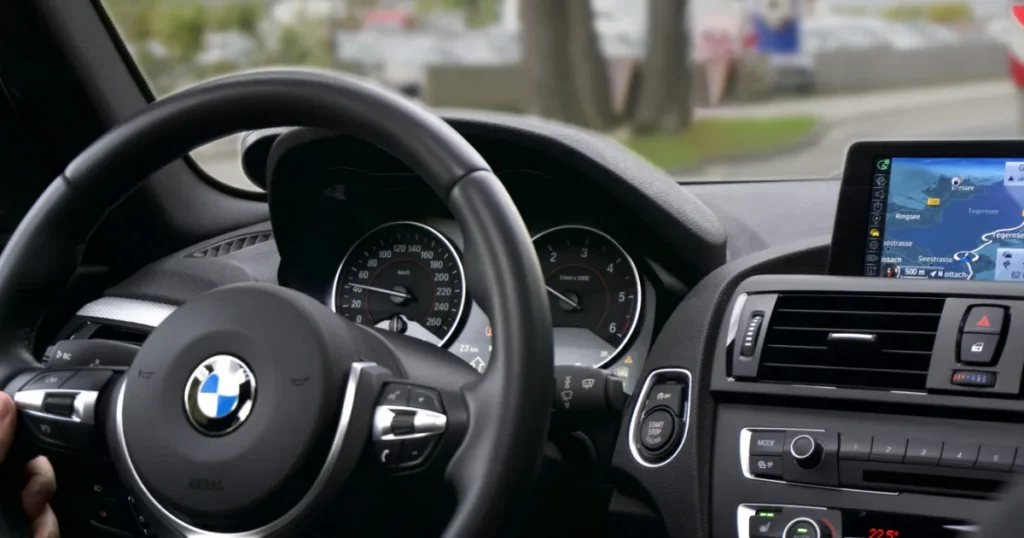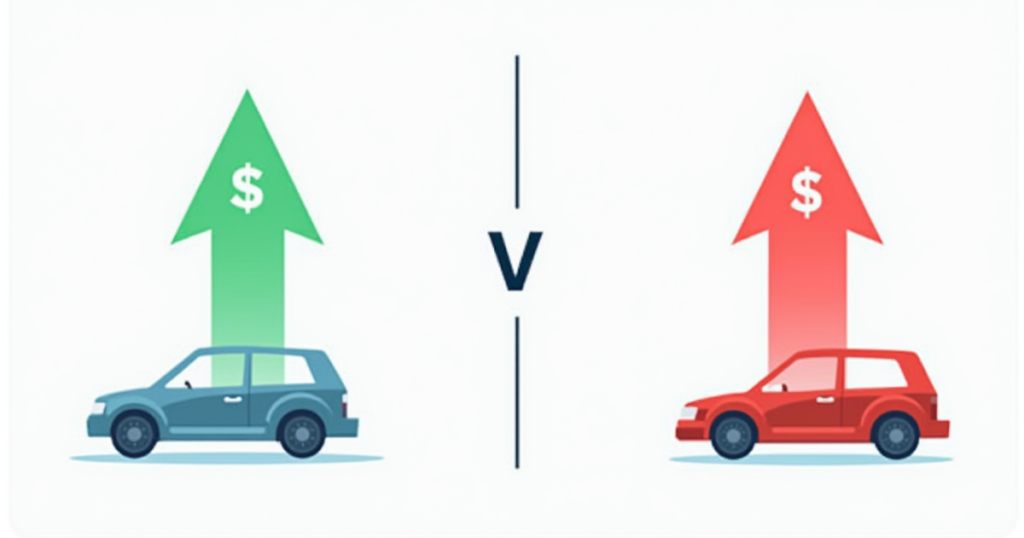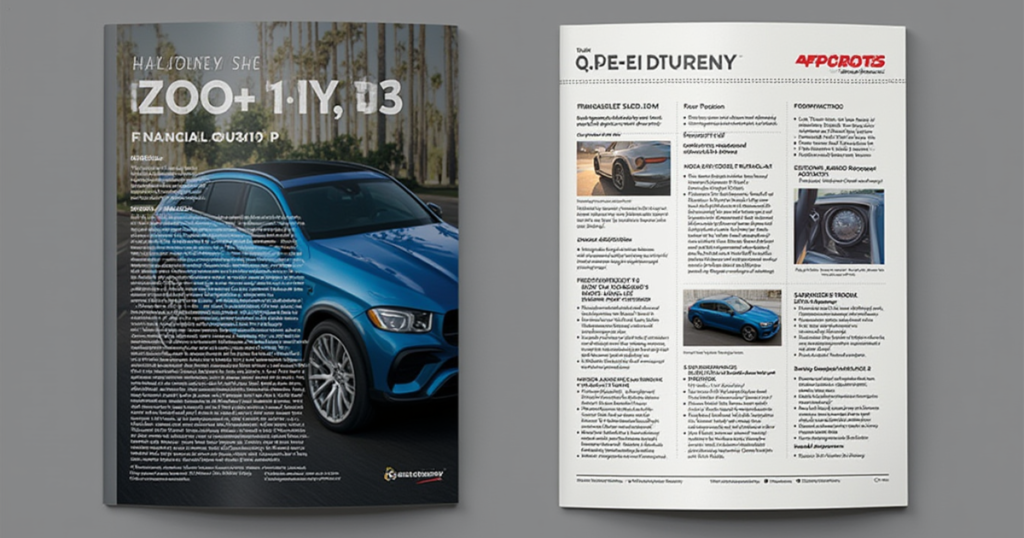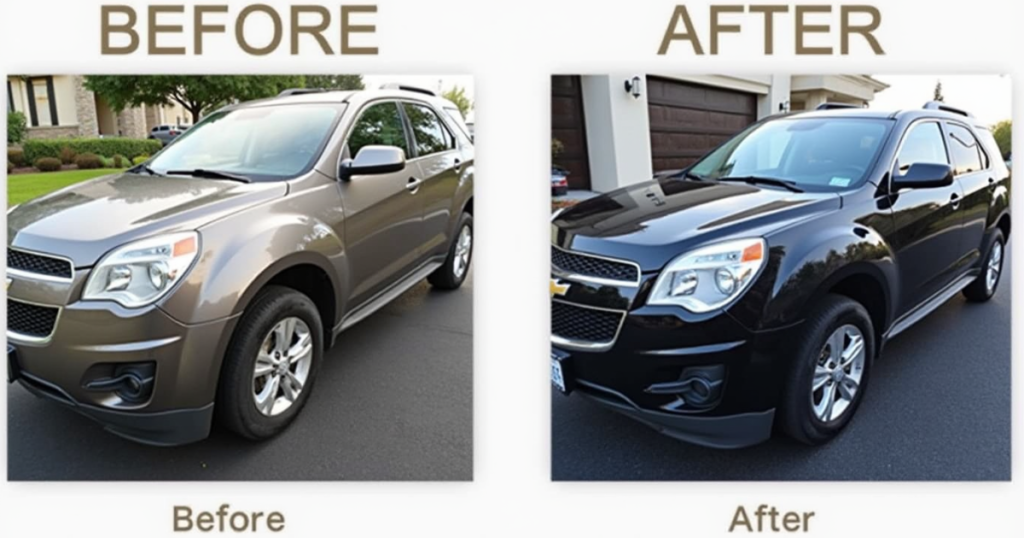Still making payments on your current vehicle but eyeing something new? You’re not alone. Life changes, financial situations evolve, and sometimes that car you financed a couple of years ago no longer fits your needs. The good news? Yes, you absolutely can trade in a financed car—even if you’re still making payments. The process isn’t as complicated as you might think, though there are some important financial considerations to keep in mind.
I remember when my sister wanted to upgrade from her three-year-old sedan to an SUV after having her second child. She still had about $8,000 left on her loan and was concerned it would be a dealbreaker. Not only was she able to trade in her financed vehicle, but the dealership handled most of the paperwork, making the transition surprisingly smooth.
Like my sister, many car owners find themselves in situations where trading in a financed vehicle makes sense. Whether you’re looking to reduce your monthly payments, upgrade to a newer model, or switch to something that better suits your current lifestyle, understanding how the trade-in process works when you still owe money on your car is crucial to making a smart financial decision.
In this comprehensive guide, we’ll walk through everything you need to know about trading in a financed car—how the process works, what happens to your remaining loan balance, potential pitfalls to watch out for, and strategies to maximize your trade-in value. We’ll also cover special situations like being underwater on your loan (owing more than the car is worth) and how to navigate those trickier scenarios.
By the end of this article, you’ll have a clear roadmap for trading in your financed vehicle and be equipped with the knowledge to determine whether it’s the right move for your specific situation.

Understanding Car Financing and Trade-Ins: The Basics
Before diving into the specifics of trading in a financed car, let’s establish some context about how auto loans and trade-ins work together. This foundation will help you better navigate the process and avoid common misconceptions.
How Auto Loans Work
When you finance a vehicle, you’re essentially borrowing money from a lender (bank, credit union, or dealership) to purchase the car. You don’t fully own the vehicle until the loan is completely paid off. Instead, the lender holds the title and has a lien on the car, giving them legal rights to the vehicle if you fail to make payments.
This is a crucial point to understand: when you trade in a financed car, you’re trading in a vehicle that you don’t technically own outright. The lender has a legal interest in the vehicle until the loan is paid in full.
According to Experian’s State of the Automotive Finance Market report, the average new car loan in America was $40,290 in Q2 2024, with used car loans averaging $27,675. With figures this substantial, it’s no wonder many people are still making payments when they decide it’s time for something different.
The Lifespan of Car Ownership
Interestingly, the average length of car ownership has increased over the years. Data from S&P Global Mobility shows that Americans now keep their new vehicles for an average of 6.5 years before trading them in. However, the typical auto loan term has also increased to nearly 72 months (6 years) for new cars and 67 months for used vehicles.
This creates a situation where many people are still paying off their cars when they decide to trade in. Sometimes, this is the result of changing needs or preferences; other times, it may be a strategic financial decision to avoid costly repairs on an aging vehicle.
“I’ve worked with countless clients who thought they were stuck with their current vehicle until it was paid off,” says Sarah Chen, a financial advisor specializing in consumer debt. “They’re often surprised to learn that trading in a financed car is a relatively standard transaction that happens thousands of times each day across the country.”
Equity vs. Negative Equity
When discussing trading in a financed car, understanding the concepts of equity and negative equity is essential:
- Equity: When your car is worth more than what you owe on the loan. This positive equity can be applied as a down payment on your next vehicle.
- Negative equity (being “underwater” or “upside-down”): When you owe more on your loan than the car is currently worth.
A 2023 Edmunds report found that nearly 33% of car trade-ins involved negative equity, with the average amount being about $5,400. This is a significant factor that can complicate the trade-in process.
My own experience reflects these statistics. When I traded in my previous car after just three years, I had about $2,000 in positive equity—not a fortune, but enough to offset some of the down payment on my new vehicle. A friend who traded in a luxury vehicle after a year, however, found himself with $7,000 in negative equity that had to be addressed before moving forward.
Understanding these basic concepts provides the foundation for navigating the trade-in process successfully, regardless of where you stand with your current auto loan.

How to Trade In a Financed Car: The Step-by-Step Process
Trading in a financed car follows a relatively straightforward process, though each step requires attention to detail to ensure you’re making financially sound decisions. Here’s how it typically works:
1. Determine Your Car’s Current Value
Before walking into a dealership, arm yourself with knowledge about your car’s worth. Several resources can help you establish a baseline value:
- Kelley Blue Book (KBB): Offers a range of values based on condition, mileage, and features
- Edmunds: Provides trade-in values with detailed condition assessments
- NADA Guides: Often used by dealers and offers region-specific valuations
- Carvana, CarMax, or Vroom: These online retailers provide instant offers that can serve as solid comparison points
Recent data shows that values from different sources can vary by as much as 10-15%, so checking multiple platforms gives you a more accurate range. “Getting multiple value estimates is like getting multiple quotes for home repairs,” explains Tony Martinez, a veteran car sales manager. “It gives you negotiating power and realistic expectations.”
When I was preparing to trade in my Mazda, the difference between the highest and lowest valuation was nearly $1,800—a significant amount that would have directly impacted how much I needed to finance on my new purchase.
2. Find Out Your Loan Payoff Amount
Next, contact your lender to request the exact payoff amount for your loan. This figure may be different from what you see on your monthly statement because it includes:
- The remaining principal balance
- Any accrued interest since your last payment
- Possible prepayment penalties (though these are less common today)
Many lenders offer this information through their online portals, but a quick phone call ensures you have the most up-to-date figure. The payoff amount is crucial because it tells you exactly how much needs to be paid to release the lien on your vehicle.
3. Calculate Your Equity Position
Now that you know your car’s approximate value and your loan payoff amount, you can determine your equity position by performing a simple calculation:
Estimated Trade-in Value – Loan Payoff Amount = Equity Position
For example:
- If your car is worth $15,000 and you owe $12,000: You have $3,000 in positive equity
- If your car is worth $15,000 and you owe $18,000: You have $3,000 in negative equity
According to Cox Automotive research, about 35% of trade-ins in 2023 had positive equity, with the average amount being around $3,800.
4. Gather Your Documentation
Before heading to the dealership, collect all necessary paperwork:
- Your vehicle’s registration
- Your driver’s license
- Loan account information (account number, lender contact details)
- Most recent loan statement
- All sets of keys
- Maintenance records (these can help boost your car’s perceived value)
- Payoff letter from your lender (if available)
“Having your documentation organized shows you’re a serious and prepared buyer,” notes Isabella Wong, a consumer advocate at a major credit union. “This can subtly improve your negotiating position and expedite the process.”
5. Get Multiple Trade-in Offers
Don’t settle for the first offer you receive. Visit multiple dealerships or use online services to get competing offers. This approach typically nets consumers an additional $500-$1,500 on their trade-in value, according to a 2023 study by iSeeCars.
When shopping your trade-in, consider:
- Dealerships that sell your specific make (they may offer more)
- CarMax, Carvana, and similar services for comparison
- Dealerships where you plan to purchase your next vehicle
- Using offers from one place to negotiate with another
6. Understand How the Dealer Handles the Transaction
When you trade in a financed car, the dealer typically handles paying off your existing loan. The transaction generally works like this:
- You and the dealer agree on a trade-in value
- The dealer contacts your lender to verify the payoff amount
- The dealer includes paying off your loan as part of the overall transaction
- If you have positive equity, it’s applied to your new purchase
- If you have negative equity, it’s either paid by you separately or rolled into your new loan
“The biggest misconception I see is people thinking they need to pay off their loan before trading in,” says Marcus Lee, a finance manager at a multi-brand dealership. “In reality, the dealership handles this as part of the transaction, which simplifies the process considerably.”
7. Review the Offer and Complete the Trade
Once you’ve negotiated a satisfactory deal, the dealership will prepare the paperwork. Before signing:
- Confirm the agreed-upon trade-in value is correctly listed
- Verify your payoff amount is accurately represented
- Ensure any positive equity is properly credited toward your new purchase
- If rolling over negative equity, confirm the amount is correct
- Check that all numbers add up properly in the final calculation
After signing, the dealer will handle the paperwork with your previous lender and your new financing arrangement. The entire process—from walking into the dealership to driving away in your new car—can often be completed in a single day, though complex situations may take longer.

Dealing with Negative Equity: Special Considerations
One of the most challenging aspects of trading in a financed car arises when you’re underwater on your loan. Let’s explore the options and implications of trading in with negative equity.
Understanding the Impact of Negative Equity
When you owe more than your car is worth, that difference doesn’t simply disappear when you trade in. It must be addressed through one of several methods, each with its own financial implications.
According to Edmunds, the percentage of trade-ins with negative equity reached a concerning high of 43% in early 2023 following the pandemic-related vehicle value fluctuations, with the average underwater amount exceeding $5,000.
Options for Handling Negative Equity
1. Roll It Into Your New Loan
The most common approach is to include the negative equity in your new car loan. While this option offers convenience, it comes with significant drawbacks:
- You’ll be financing your negative equity, meaning you’ll pay interest on it
- You’ll start your new loan already underwater
- Your monthly payments will be higher
- You may have trouble qualifying for favorable loan terms
“Rolling negative equity into a new loan is like taking a cash advance on a credit card to pay off another credit card,” warns financial educator Teresa Dodson. “It provides immediate relief but can create a cycle of debt that’s difficult to escape.”
The Consumer Financial Protection Bureau reports that consumers who roll negative equity into new loans are 40% more likely to fall behind on payments and potentially face repossession.
2. Pay the Difference Out of Pocket
If you have savings available, paying off the negative equity separately is often the wisest financial choice. This approach:
- Starts your new loan with a clean slate
- Reduces your monthly payment on the new vehicle
- Typically results in better loan terms
- Prevents compounding your debt problem
Coming up with a lump sum isn’t easy for everyone, but even paying a portion of the negative equity can improve your position.
3. Delay Your Trade-in
Sometimes the best decision is to postpone trading in until you’ve paid down more of your loan or your car’s value stabilizes. Strategies to accelerate this process include:
- Making extra principal payments when possible
- Refinancing to a lower interest rate but keeping the same payment amount
- Maintaining your vehicle well to preserve its value
- Waiting for market conditions to improve
“I advise clients to aim for at least a neutral equity position before trading in whenever possible,” says Chen. “Even if that means keeping your current vehicle for another 6-12 months while making additional payments.”
4. Consider Leasing as an Alternative
In some cases, leasing rather than buying your next vehicle can provide a path forward when dealing with negative equity:
- Leasing may require lower monthly payments
- Some manufacturers offer special lease programs for customers with negative equity
- Leasing provides a definite endpoint for your commitment
However, leasing has its own set of financial considerations and isn’t right for everyone, particularly high-mileage drivers.
Real-World Example: Managing Negative Equity
Michael found himself with $4,200 in negative equity on his SUV but needed to downsize to a more fuel-efficient vehicle due to a longer commute. Here’s how he handled it:
- He researched manufacturer incentives and found a $2,500 rebate on a new compact sedan
- He used $1,700 from his emergency fund to cover part of the negative equity
- He negotiated aggressively on the new car’s purchase price
- He only rolled the remaining amount (about $1,500) into the new loan
“By addressing most of the negative equity upfront, I was able to secure a much better interest rate on my new loan,” Michael explained. “My payment went down by $175 per month due to the more efficient car and better loan terms, which helped me rebuild my emergency fund within a few months.”

Maximizing Your Trade-in Value: Smart Strategies
Whether you have positive or negative equity, getting the best possible value for your trade-in is crucial to improving your financial position. Here are proven strategies to maximize what dealerships will offer for your financed vehicle.
Timing Your Trade-in Strategically
The automotive market fluctuates seasonally, and understanding these patterns can help you maximize your return:
- End of model year (typically September-October): Dealers often offer better trade-in values to make room for new models
- End of calendar year: Dealerships push to meet annual sales goals
- End of month/quarter: Sales teams work toward period quotas
- Tax refund season (February-April): Increased buyer traffic means dealers need more inventory
According to data from iSeeCars, trading in during high-demand months can increase your offer by 5-8% compared to slow periods.
“I’ve seen identical cars with similar mileage get trade-in offers that differ by over $1,000 simply based on when the customer came in,” notes Lee. “Late December and late March are particularly advantageous times for consumers in many markets.”
Presentation Matters: Preparing Your Vehicle
While major mechanical issues should be disclosed, investing in minor improvements before trading in can yield significant returns:
- Professional detailing: A thorough cleaning typically costs $150-250 but can increase perceived value by $500+
- Minor cosmetic repairs: Fixing small dents or scratches (under $200) often yields a 2-3x return
- Maintenance documentation: Organized service records demonstrate a well-cared-for vehicle
- Address warning lights: Resolving simple issues that trigger dashboard warnings prevents substantial devaluation
“The psychology behind car buying applies to dealers too,” explains automotive appraiser David Cohen. “A clean, well-presented vehicle suggests it’s been cared for mechanically as well, which reduces the dealer’s perceived risk.”
When I traded in my last car, I spent $180 on detailing and $95 fixing a minor door ding. The dealer’s initially quoted trade value increased by $400 after seeing the vehicle in person—a significant return on investment.
Negotiation Tactics That Work
The negotiation phase offers additional opportunities to improve your position:
- Separate transactions: Negotiate your trade-in value before discussing the new vehicle purchase
- Withhold information strategically: Don’t immediately reveal you plan to purchase from the same dealer
- Use competing offers: Get written offers from multiple dealers, including CarMax or online retailers
- Focus on the trade difference: The gap between your trade value and new car price is often more negotiable than either figure alone
- Be willing to walk away: Sometimes returning a day later results in a better offer
“The dealer who gives you the best price on a new car might not offer the best trade-in value,” warns Wong. “By getting itemized offers and comparing the final out-the-door prices, you can identify the truly best deal.”
Know What Dealers Look For
Understanding how dealers evaluate trade-ins helps you focus on what matters most:
- Market demand: Vehicles currently in high demand locally will receive better offers
- Reconditioning costs: Dealers estimate what they’ll need to spend before reselling
- Vehicle history: Accident history significantly impacts value (up to 30% reduction for serious accidents)
- Desirable features: Certain options and packages enhance resale value
- Mileage thresholds: Staying under certain mileage points (e.g., 36,000, 60,000, 100,000) can significantly impact value
According to Cox Automotive data, vehicles with complete service histories typically receive trade-in offers 5-10% higher than identical vehicles without documentation.
Special Situations in Trading Financed Cars
While we’ve covered the standard process, several special situations deserve specific attention. These scenarios require additional consideration or steps to navigate successfully.
When Your Car Has Been in an Accident
Accident history can significantly impact your trade-in value and process:
- Diminished value: Even properly repaired vehicles typically lose 10-30% of their pre-accident value
- Disclosure requirements: You must disclose significant repairs, as dealers will discover them through vehicle history reports anyway
- Documentation benefits: Having complete repair records from reputable shops can mitigate some value loss
“The key with previous accidents is to be upfront but prepared with documentation,” advises Cohen. “Showing quality repairs from certified shops with warranties can significantly reduce the value impact.”
Trading in a Financed Car with Poor Credit
If your credit has deteriorated since your original purchase, trading in requires careful navigation:
- You may face higher interest rates on your new loan
- Lenders may be more restrictive about rolling in negative equity
- Additional down payment may be required to offset perceived risk
“Working with credit unions or securing pre-approval before shopping can provide leverage even with challenged credit,” suggests Wong. “Also consider trading down to a less expensive vehicle to reduce your overall financing needs.”
Trading in Very Early in Your Loan Term
The first year of ownership typically sees the steepest depreciation, making early trade-ins financially challenging:
- New vehicles lose approximately 20-30% of their value in the first year
- Early loan payments are heavily weighted toward interest rather than principal
- Combined, these factors almost guarantee negative equity
If trading in during the first year is unavoidable, consider:
- Vehicles with stronger depreciation curves (typically Japanese and Korean brands)
- Making a substantial down payment on the new vehicle
- Looking for manufacturer incentives that might offset some losses
Trading in Just Before the End of Your Loan
Conversely, trading in when you’re nearly finished with your loan presents unique advantages:
- You likely have significant positive equity
- Your credit profile may have improved since your original purchase
- You’re in a strong negotiating position
“I always advise clients to consider accelerating their final few payments to complete ownership before trading if possible,” says Chen. “This simplifies the process and can sometimes result in tax advantages depending on your state.”
Dealing with Co-signers or Co-borrowers
If your original loan includes a co-signer or co-borrower, additional steps are necessary:
- Both parties typically need to be present for the trade-in transaction
- The co-signer/co-borrower must agree to the transaction
- Credit implications affect both parties
“Communication is crucial when a shared loan is involved,” warns Martinez. “I’ve seen deals fall apart at the last minute because a co-signer wasn’t properly informed or included in the process.”

The Financial Impact: Understanding the Long-Term Effects
Trading in a financed car has implications that extend beyond the immediate transaction. Let’s examine the broader financial effects to help you make a fully informed decision.
Impact on Your Credit Score
Trading in a financed vehicle influences your credit profile in several ways:
- Paying off the old loan: Generally viewed positively by credit bureaus as it shows completed obligation
- Opening a new loan: Temporarily lowers your average account age and adds a hard inquiry
- Debt-to-income ratio: May improve or worsen depending on your new payment amount
- Loan utilization: Rolling in negative equity increases your loan-to-value ratio, which can negatively impact score
FICO data indicates that paying off an auto loan typically results in a temporary 10-20 point decrease due to changes in credit mix, followed by a gradual improvement over 3-6 months as positive payment history accumulates.
Tax Considerations
Depending on your location, trading in may offer tax advantages:
- Sales tax credit: Many states only charge sales tax on the difference between your new vehicle price and trade-in value
- Property tax implications: Some jurisdictions prorate annual vehicle property taxes
- Business use considerations: If your vehicle is used for business, consult your tax professional about potential deduction changes
“The tax savings alone can make trading in financially superior to selling privately in many states,” explains tax accountant Miguel Sanchez. “In a state with 7% sales tax, a $20,000 trade-in value would save $1,400 in taxes on your new purchase—often exceeding the price premium you might get by selling privately.”
Long-Term Debt Management
Consider how trading in affects your overall financial picture:
- Loan term extension: Trading frequently often means extending your total time in debt
- Interest costs: Longer loans or rolled-in negative equity significantly increases total interest paid
- Depreciation alignment: Ideally, your loan term should not exceed the period you plan to keep the vehicle
- Opportunity cost: Higher car payments may restrict other financial goals like retirement savings
A Consumer Reports analysis found that consumers who trade vehicles every 3-4 years spend approximately 35% more on transportation over a 10-year period compared to those who keep vehicles for 8-10 years.
Case Study: The Financial Impact of Trading In Too Frequently
To illustrate these points, let’s look at two approaches:
Scenario A: Frequent Trader
- Buys new car for $30,000
- Trades in after 3 years with $5,000 negative equity
- Rolls negative equity into new $32,000 car
- Repeats pattern every 3 years
Scenario B: Long-Term Owner
- Buys same initial $30,000 car
- Keeps vehicle for 9 years
- Makes same monthly payment after loan is paid off, but to savings
- Purchases new vehicle with significant down payment from savings
Over a 15-year period, Scenario A results in total transportation costs approximately $24,000 higher than Scenario B, with significantly less equity accumulated.
“The most financially efficient approach is usually to purchase a 2-3 year old vehicle and keep it for 7-10 years,” advises Chen. “This minimizes the impact of early depreciation while still providing reliable transportation before major systems typically begin to fail.”

Practical Tips: Making the Most of Your Trade-In Experience
Now that we’ve covered the process and financial implications, let’s explore some practical tips to ensure a smooth and advantageous trade-in experience.
Timing Your Trade-In Wisely
Strategic timing can significantly impact your trade-in value:
- Consider market seasonality: SUVs and trucks often command higher values in fall/winter, while convertibles and sports cars peak in spring
- Watch for key mileage thresholds: Trading in just before hitting 36,000, 60,000, or 100,000 miles can prevent value drops
- Monitor market trends: Supply chain issues, fuel price fluctuations, and economic conditions affect different vehicle segments differently
“We saw compact car values surge 15-20% during the 2022 gas price spike,” notes Cohen. “Consumers who timed their trade-ins of efficient vehicles during that window received exceptional offers.”
Leverage Manufacturer Incentives
Auto manufacturers frequently offer special programs that can offset negative equity or enhance your trade-in position:
- Conquest cash: Incentives for switching from competing brands
- Loyalty bonuses: Rewards for sticking with the same manufacturer
- Increased trade-in promotions: Periodic offers guaranteeing minimum trade values
- Special financing: Low or zero-percent offers that can offset other costs
“Manufacturer incentives often have specific requirements and limited windows,” explains Martinez. “Researching current offers before shopping can help you target the optimal timing and brand for your situation.”
During a recent promotion, Toyota offered an additional $1,000 toward trade-ins of any brand, effectively providing a guaranteed minimum regardless of condition—a significant advantage for owners of higher-mileage vehicles.
Consider Alternative Disposition Methods
While trading in is convenient, exploring alternatives can sometimes yield better results:
- Private sale: Typically nets 10-15% more than trade-in value but requires more effort
- Direct-to-consumer companies: Carvana, Vroom, and similar services often offer more than traditional dealerships
- Consignment: Some dealerships offer consignment programs that split the difference between trade and private sale values
“For vehicles with specialized appeal like performance cars or well-maintained luxury models, the gap between trade-in and private sale value can exceed 20%,” notes Wong. “In these cases, the extra effort of private selling is often worthwhile.”
Prepare for the Financial Conversation
When finalizing your trade-in, be prepared for the financial discussion:
- Know your credit score in advance: Pre-check your credit to avoid surprises
- Secure pre-approval: Having financing alternatives provides leverage
- Understand the full transaction: Focus on the complete out-the-door price, not just monthly payments
- Read all documents carefully: Pay special attention to trade-in value, payoff amount, and any rolled-over balance
“Many consumers focus exclusively on monthly payment, which can obscure unfavorable terms elsewhere in the deal,” warns Sanchez. “Understanding the complete financial picture—including interest rate, term, and total interest paid—is essential.”
Case Study: Making the Right Trade-In Decision
To bring together the concepts we’ve discussed, let’s examine a real-world example of successfully trading in a financed vehicle.
Jennifer’s Situation
Jennifer purchased a midsize SUV three years ago for $38,000, financing $34,000 after her down payment. Due to a job relocation, she now faces a much longer commute and wants to trade for something more fuel-efficient. Her current situation:
- Remaining loan balance: $19,500
- Current vehicle market value: $22,000
- Positive equity: Approximately $2,500
- Credit score: Improved from 680 to 720 since original purchase
- New vehicle interest: Compact hybrid sedan
Jennifer’s Approach
- Research and preparation: Jennifer researched current values using multiple sources and obtained her exact payoff amount.
- Vehicle preparation: She invested $200 in detailing and minor touch-ups, assembled all maintenance records, and ensured the vehicle was in optimal condition.
- Timing consideration: She waited until the end of the quarter when dealerships were pushing to meet sales targets.
- Multiple offers: She obtained trade-in offers from three dealerships as well as Carvana and CarMax.
- Negotiation strategy: She negotiated the trade-in value separately from her new car purchase and used competing offers as leverage.
The Outcome
The dealership offering the best overall package provided:
- $23,100 for her trade-in (significantly above initial estimate)
- Handled the loan payoff process completely
- Applied her $3,600 positive equity toward the new vehicle
- Secured a more favorable interest rate (3.9% vs. her previous 5.2%)
- Reduced her monthly payment by $175 despite similar loan terms
“I was surprised at how smoothly the process went,” Jennifer shared. “By being prepared and understanding my equity position, I was able to significantly improve my financial situation while getting a vehicle better suited to my current needs.”
Jennifer’s case demonstrates how a well-informed approach to trading in a financed vehicle can result in a positive outcome, particularly when starting from a position of positive equity.
Conclusion: Is Trading In Your Financed Car the Right Move?
Throughout this guide, we’ve examined the process, financial implications, and strategies for trading in a financed vehicle. But the most important question remains: Is trading in your financed car the right decision for your specific situation?
The answer depends on several key factors:
- Your equity position: Positive equity provides flexibility, while significant negative equity may suggest waiting
- Your financial goals: Aligning your car decisions with broader objectives like debt reduction or savings
- Vehicle reliability: Increasing repair costs may justify a trade-in even with some negative equity
- Changing needs: Family growth, commute changes, or lifestyle shifts may necessitate a different vehicle
“The best decisions balance immediate needs with long-term financial health,” advises Chen. “Sometimes the financially optimal choice isn’t practical for your current situation, and that’s okay—the key is making an informed decision with clear understanding of the trade-offs.”
When evaluating your options, consider these final questions:
- Is trading in solving a legitimate problem, or just satisfying a desire for something new?
- Have you calculated the total cost of the trade, including potential extended debt?
- Are there alternatives (refinancing, minor repairs, etc.) that might address your concerns at lower cost?
- Does your current financial situation support taking on a new or modified loan obligation?
Trading in a financed car is neither inherently good nor bad—it’s simply a financial tool that must be used wisely. By understanding the process, appreciating the financial implications, and applying the strategies we’ve discussed, you can make confident decisions that serve both your transportation needs and long-term financial well-being.
Remember that each trade-in situation is unique, and what worked for someone else may not be ideal for you. Take the time to evaluate your specific circumstances, do your research, and consider consulting with a financial advisor for particularly complex situations.
FAQ: Common Questions About Trading In Financed Cars
Do I need to pay off my car loan before trading in?
No, you don’t need to pay off your loan first. The dealership will handle paying off your existing loan as part of the trade-in process. They’ll contact your lender for the payoff amount and include that in the overall transaction.
Will trading in my financed car hurt my credit score?
Trading in a financed car typically has a minimal and temporary impact on your credit score. You’ll see a small dip from the credit inquiry for the new loan, but successfully paying off the old loan is viewed positively. The most significant factor will be whether you maintain timely payments on your new loan.
Can I trade in my car if I’m behind on payments?
While technically possible, trading in a car with delinquent payments is difficult. Most dealers require the loan to be current before proceeding with a trade-in. If you’re struggling with payments, contact your lender to discuss hardship options before pursuing a trade-in.
How does negative equity affect my new car purchase?
Negative equity is typically added to your new loan balance, increasing both your principal and monthly payments. For example, if you’re $4,000 underwater and finance a $25,000 car, your new loan would be for $29,000 plus any additional fees and taxes.
What documentation do I need to trade in a financed vehicle?
Bring your driver’s license, vehicle registration, current insurance card, all sets of keys, loan account information (with account number and lender contact), and maintenance records. The dealer will also need your social security number to run a credit check if you’re financing the new purchase.



